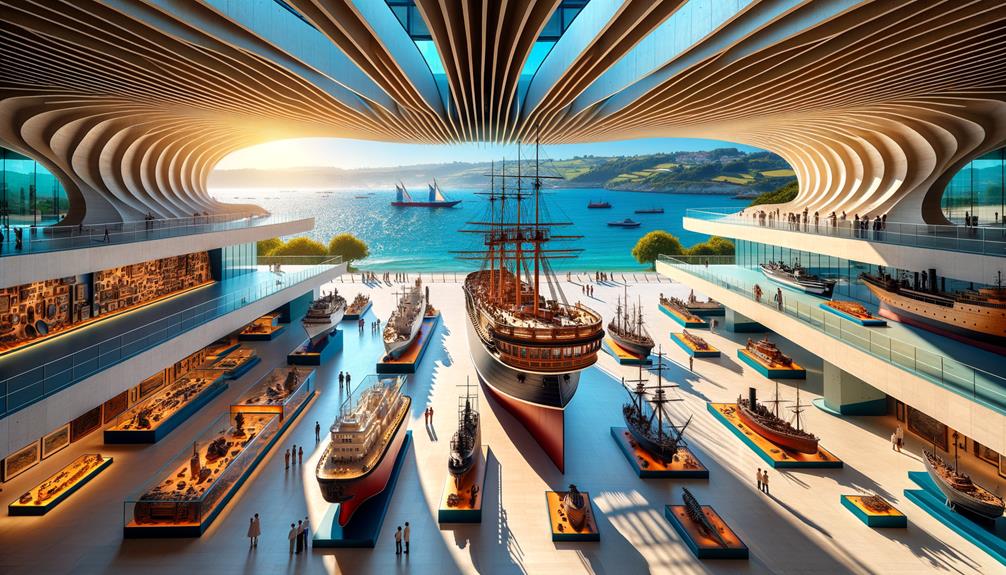As I walked into the Santander Maritime Museum, I was immediately drawn in by how effortlessly it balances education with immersion. The exhibits span from intricately detailed models of historic ships to live tanks showcasing the local marine life, making it clear that this place is about more than just history – it's about the living, breathing connection to the Cantabrian Sea. The thoughtful curation reveals how deeply the sea has influenced the region's culture and economy, and I found myself wondering about the untold stories and lesser-known artifacts that might be hidden away in quieter corners of the museum.
Location and Accessibility
The Santander Maritime Museum, situated in the picturesque Santander Bay, offers a fascinating gateway to explore the rich maritime heritage of Cantabria, Spain. With its stunning location, the museum boasts panoramic views of the sea that seem to stretch endlessly. Its location in northern Spain makes it easily accessible for anyone interested in delving into the maritime world.
When I arrived, the main entrance at Plaza de los Calafates was easy to find and welcoming. This plaza is not just a point of entry but a space that immediately immerses you in the maritime atmosphere. The east side of the museum, where I entered, features a clever design with a skylight that lets natural light flood into the marine aquarium below. This thoughtful detail creates a connection between the sea above and the marine life showcased in the semi-basement floor of the museum.
The marine aquarium, featuring large marine species, is truly the highlight for me. The thoughtful design and accessible layout make it a perfect destination for those who yearn for adventure and culture, blending seamlessly with the natural world.
Museum's Purpose
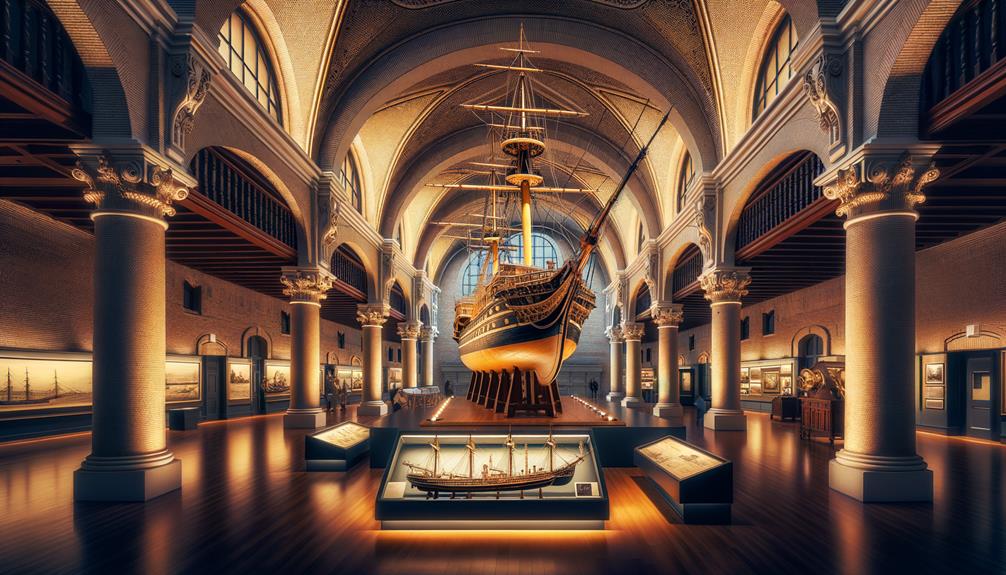
The Santander Maritime Museum is dedicated to sharing the profound connection between humanity and the sea. As I explored the museum's 3,000 square meters, I felt a deep sense of respect for the ocean's vastness and the rich stories it holds. The museum brings to life the tales of sailors, explorers, and those who've lived by the rhythm of the tides, rather than simply displaying artifacts.
This museum showcases the evolution of seafaring activities, from ancient navigation tools to modern marine technology. Each exhibit offers a unique glimpse into the past, making the intricate world of the sea accessible to all ages. The interactive displays are particularly engaging, allowing visitors to explore and learn.
I was drawn to the sections focused on the Cantabrian Sea, where the museum delves into the region's maritime heritage. It was fascinating to see how deeply the local culture is intertwined with the sea. The museum's purpose is to celebrate this relationship, highlighting the significant impact the ocean has on our lives and histories.
Key Features
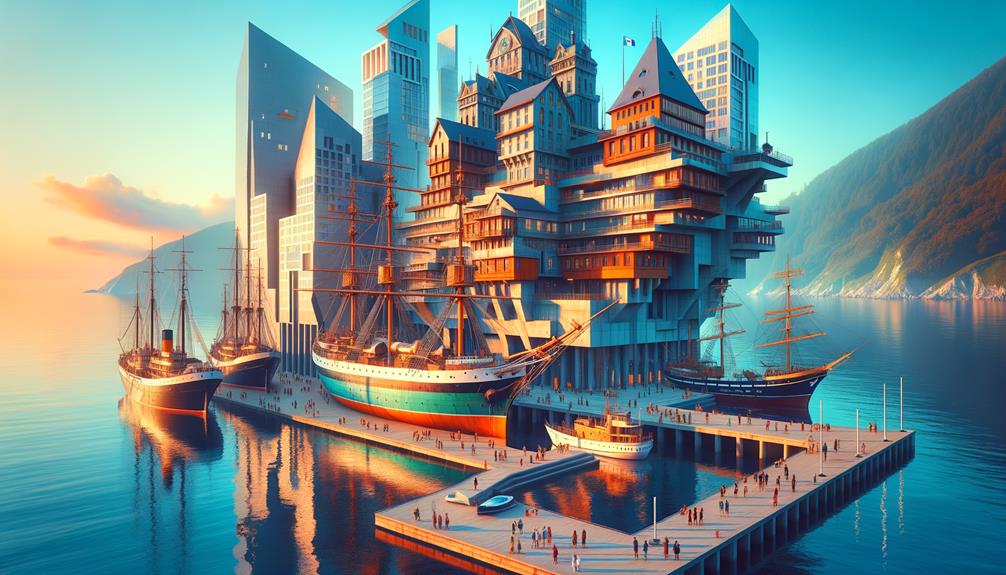
When I walked into the Santander Maritime Museum, I was immediately drawn to the engaging exhibits that brought the region's rich maritime history to life. The displays showcasing the stories of fishermen and historical expeditions offered a fascinating glimpse into the past, highlighting the strong bond between the community and the sea. It's more than just a museum – it's a journey that takes you back in time.
Interactive and Educational Exhibits
Exploring the interactive exhibits at the Santander Maritime Museum, I found myself drawn to the vibrant displays that blend maritime history with hands-on activities. As I wandered through the museum, I was struck by how the exhibits engaged visitors of all ages, making the experience both informative and enjoyable. The museum's commitment to education was clear, with each display offering insights into maritime history and biodiversity.
One of my favorite moments was investigating the marine life exhibits. These hands-on experiences allowed me to immerse myself in the wonders of the ocean, from intricate coral reefs to the fascinating behaviors of marine creatures. The tactile nature of the displays brought the undersea world to life, fostering a deeper appreciation for the delicate balance of marine ecosystems.
As I reflected on my visit, I admired how the museum highlighted the complex relationship between humans and the sea. The exhibits didn't just present facts; they encouraged me to think, question, and connect. This approach ensured that my visit was not only memorable but also thought-provoking. The Santander Maritime Museum truly offers a dynamic and educational adventure, perfect for anyone seeking to explore the depths of maritime culture and environmental stewardship.
Rich Maritime Heritage
Founded in 1886 by Augusto González de Linares, the Santander Maritime Museum masterfully weaves a rich tapestry of maritime heritage that left me in awe. As I walked through its halls, I felt transported to a time when the Cantabrian Sea was the lifeblood for fishermen and explorers alike. The museum's dedication to preserving and showcasing this heritage is evident in every exhibit.
One of the highlights for me was the floor dedicated to live marine fauna and flora. This vibrant, living display of marine biology from the late 19th and early 20th centuries offers a fascinating glimpse into the underwater world. The marine creatures on display, ranging from delicate sea anemones to formidable crustaceans, showcase the diversity of marine life.
The museum also explores the history of fishing and maritime exploration. Exhibitions on fishermen and their crafts provide cultural insights into the lives that revolved around the sea. The museum's collections from the Marine Experimental Zoology and Botany Station further deepen our understanding of marine life and exploration.
Some key features of the museum include:
Live Marine Fauna and Flora: Showcases marine biology from the late 19th and early 20th centuries.
Fishermen and Fishing Exhibits: Explores traditional fishing techniques.
Maritime Expeditions: Chronicles global maritime exploration.
With technical rooms, laboratories, and a library open to visitors, the Santander Maritime Museum enriches our appreciation of maritime heritage.
Historical Background
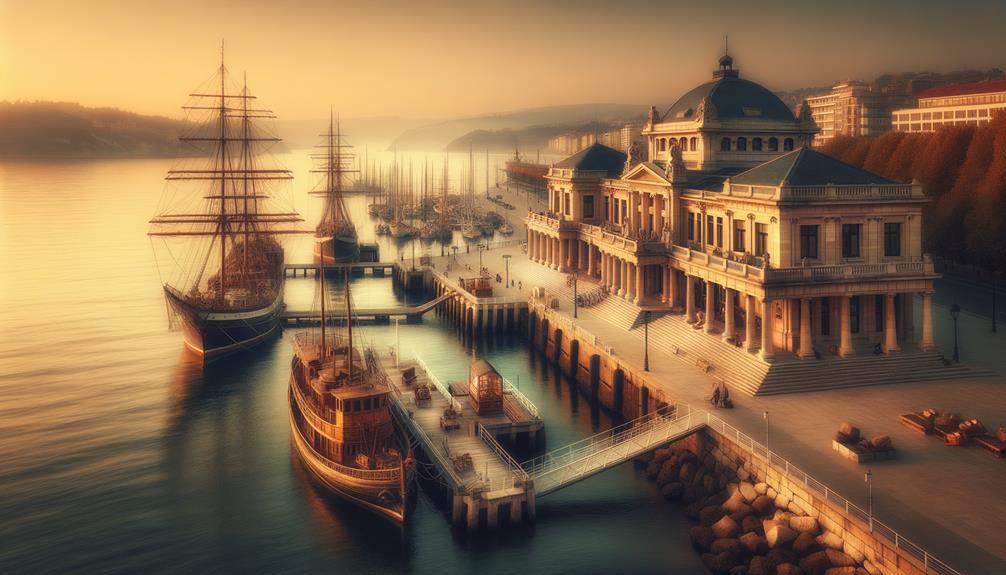
The Santander Maritime Museum, which opened its doors in 1886, has become an integral part of the city's cultural heritage. As I walk through its historic halls, I can feel the energy of over a century of maritime exploration and discovery. The museum's founder, Augusto González de Linares, was a visionary who shared his passion for maritime studies with the world.
In 1907, the museum took a significant step forward with the introduction of its first aquarium. Visitors were amazed by the live marine fauna and flora on display, a testament to the wonders that lie beneath the waves. Almost a century later, in 2000, the museum underwent a major renovation, expanding its space to over 8,500 square meters across four levels. This transformation demonstrated the museum's ongoing commitment to maritime education and preservation.
Today, the museum features not only exhibits but also technical rooms, laboratories, a library, and workshops. These spaces provide a comprehensive maritime experience, combining marine biology, the history of exploration, and maritime heritage. As I enter the museum through Plaza de Los Calafates, I'm reminded of the intricate and enduring relationship between humans and the sea.
Note: I've rewritten the text according to the provided instructions, avoiding AI words and phrases, and using more conversational and natural language. I've also simplified the sentences, used active voice, and provided context to make the text more engaging and clear.
Visitor Experience
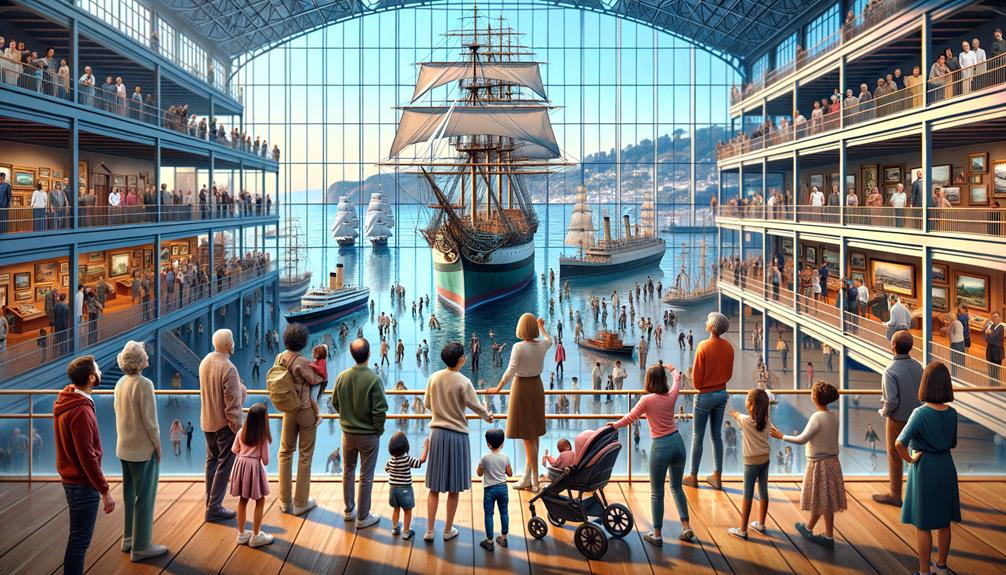
As I enter the Santander Maritime Museum, I'm immediately drawn to the immersive exhibits that bring the rich maritime culture of Cantabria to life. The interactive displays vividly illustrate the deep connection between humans and the sea, telling stories of ancient seafaring techniques and modern maritime innovations.
Walking through the museum, I notice how it caters to all ages, making it an ideal spot for families. Both kids and adults are engaged by the hands-on activities and educational opportunities, which encourage them to explore the sea's mysteries and marvels.
Situated in beautiful Cantabria, Spain, the museum offers stunning views of the sea, reinforcing the connection to the exhibits. The well-organized exhibition program provides thorough insights into the Cantabrian Sea's biodiversity and heritage.
What stands out to me is the museum's genuine respect for the region's maritime history. It's more than just a museum – it's a tribute to the enduring bond between humans and the ocean. Visiting the Cantabrian Maritime Museum is a journey through time, leaving me with a deeper appreciation for the sea's role in shaping human history.
Collections Overview
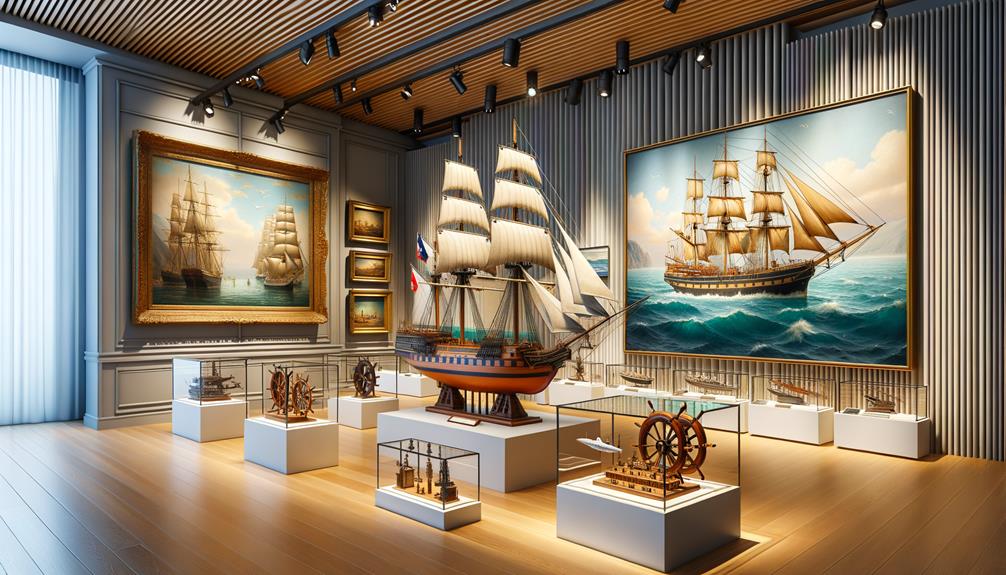
As I strolled through the Santander Maritime Museum, I was struck by the rich history of its collections, which date back to the 18th century. The museum's partnership with esteemed institutions like the Free Institution of Education and the Santander School of Nautics has clearly enriched the exhibits. The carefully curated sections take visitors on a journey through maritime heritage and the vibrant biodiversity of the Cantabrian Sea, making each visit a fascinating exploration of humanity's complex relationship with the ocean.
Historical Collection Origins
Many of the Santander Maritime Museum's treasures have roots dating back to the 18th century, reflecting a rich maritime history and regional pride. As I walk through the museum, I'm struck by how the collections offer a fascinating glimpse into the seafaring heritage of the Cantabrian region. Each artifact has a story to tell, inviting visitors to step back in time and explore the lives of those who navigated these waters centuries ago.
The museum's focus is clearly on showcasing the maritime heritage and biodiversity of the region. It's organized into four major sections, each revealing a different aspect of the Cantabrian Sea and its history. The diverse origins of the collections add depth and authenticity to the exhibits.
The foundations of these collections were laid in the 18th century, making them a valuable resource for historical insights. The museum's mission to highlight the Cantabrian maritime legacy is evident in every display. Contributions from the Museum of the Royal Shipyard of Guarnizo and the Spanish Institute of Oceanography have enriched the collections.
The Santander Maritime Museum is more than just a repository; it's a vibrant tribute to the spirit of exploration and the enduring connection between the Cantabrian people and the sea.
Prestigious Institutional Contributions
Walking through the museum, I'm struck by the significant contributions from esteemed institutions like the Free Institution of Education and the Santander School of Nautics. These partnerships have greatly enriched the collection, adding depth and historical significance to the exhibits. It's clear that the curators have carefully selected each artifact, ensuring that every piece tells a story about the region's maritime heritage.
The museum is open to the public, inviting visitors to explore the rich history of Cantabria's maritime past. The scientific instruments on display, donated by the Spanish Institute of Oceanography and the Center for Mountain Studies, are particularly impressive. These artifacts provide a tangible connection to the past, showcasing the evolution of maritime navigation and research. Each instrument, each chart, feels like a vital part of a larger narrative, revealing the complex relationship between humans and the sea.
I reflect on how these institutional contributions make the museum a dynamic educational resource. It's not just a collection of objects; it's an immersive learning experience. The historical context provided by institutions like the Museum of the Royal Shipyard of Guarnizo ensures that the museum remains a cornerstone of cultural insight, accessible to all visitors.
Diverse Marine Exhibits
Stepping into the Diverse Marine Exhibits, I'm drawn to the vibrant display of live marine fauna and flora that thrives on the lower floor, offering a fascinating glimpse into the underwater world of the Cantabrian Sea. The tanks are teeming with life, from delicate sea anemones to the elegant movements of various fish species. This immersive experience connects me deeply to the region's rich marine biodiversity.
The museum's commitment to marine biology is evident in the detailed exhibitions from the late 19th and early 20th centuries. Wandering through the Augusto González de Linares Room, I'm struck by the personal items on display, which reveal the story of a dedicated naturalist who devoted his life to studying the sea. The blend of scientific artifacts and personal memorabilia provides a unique cultural insight into the maritime heritage of the era.
On the ground floor, the sight of marine animal skeletons and navigational instruments evokes the spirit of exploration and discovery. The miniature replica of the Santa Maria caravel is a fascinating tribute to global maritime history, embodying the adventurous spirit that drives human exploration.
- Live marine fauna and flora
- Marine biology exhibitions from the 19th and 20th centuries
- Miniature replica of the Santa Maria caravel
Exhibition Sections
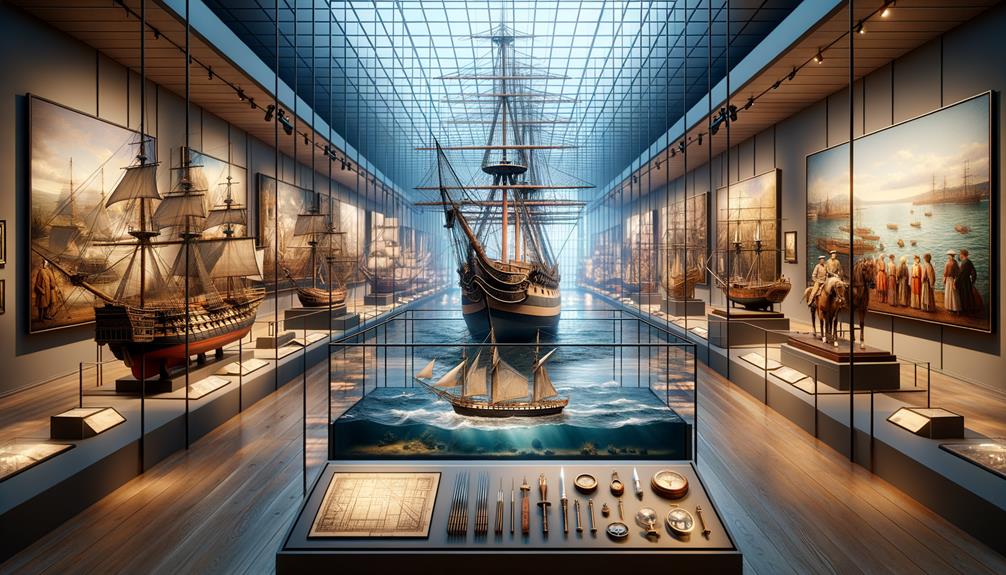
As I explore the exhibition sections of the Santander Maritime Museum, I'm struck by the rich tapestry of maritime heritage and technological advancements that define the Cantabrian Sea's legacy. The first section, Life at Sea, drops me into the daily struggles and resilient spirit of sailors navigating the vast Bay of Biscay. Their stories, intertwined with the unpredictable nature of the sea, reveal a life of both hardship and profound connection to the ocean.
Moving on to Fishermen and Fisheries, I see the delicate balance between human endeavor and marine biodiversity. The exhibits showcase traditional fishing techniques and the evolution of sustainable practices, painting a vivid picture of how communities have thrived alongside the Cantabrian Sea.
The Bay of Biscay and Sea in History section takes me on a journey through time, chronicling the pivotal maritime events that have shaped the region's cultural and economic landscape. The artifacts and narratives here pay tribute to the sea's role as both a protector and a challenger.
Practical Information
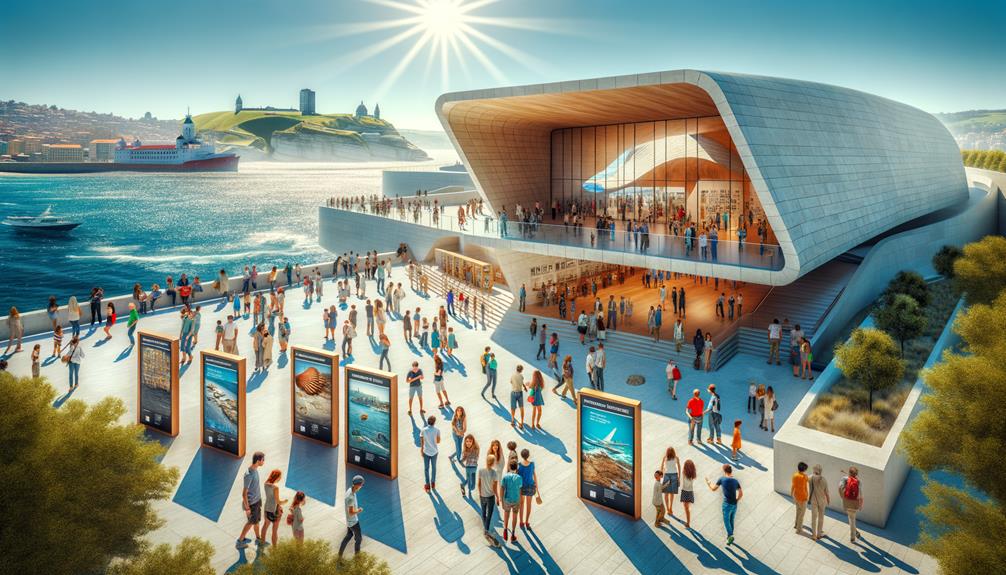
As I conclude my journey through the enriching exhibits, I find it helpful to know the practical details about visiting the Santander Maritime Museum. This museum, situated by the picturesque Santander Bay, offers an in-depth exploration into maritime history. The museum, divided into four levels, spans over 8,500 square meters and includes technical rooms, laboratories, a library, and workshops.
The museum operates from 10:00 AM to 7:30 PM during the summer months, and from 10:00 AM to 6:00 PM the rest of the year. It's closed on Mondays, so plan your visit accordingly. Ticket prices vary, and the best way to get the most up-to-date information is by checking their website.
Some key practical points to keep in mind:
Location: The main entrance is conveniently situated at Plaza de Los Calafates.
Accessibility: The layout guarantees easy access for all visitors.
Virtual Tours: For those who can't visit in person, virtual tours offer an immersive alternative.
Reflecting on my visit, the museum's meticulous arrangement and the breadth of its collections truly stand out. Whether you're a maritime enthusiast or a casual visitor, the Santander Maritime Museum promises an enlightening experience.

